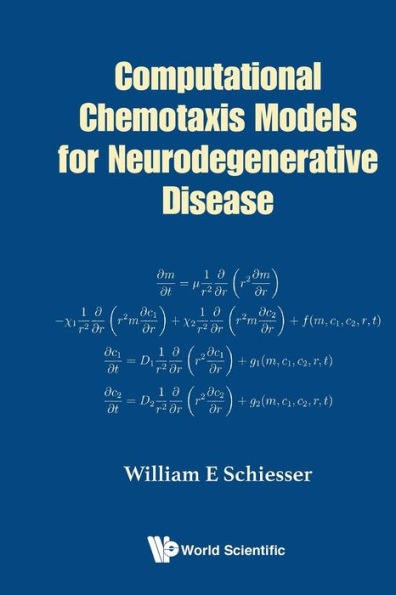The mathematical model presented in this book, based on partial differential equations (PDEs) describing attractant-repellent chemotaxis, is offered for a quantitative analysis of neurodegenerative disease (ND), e.g., Alzheimer's disease (AD). The model is a representation of basic phenomena (mechanisms) for diffusive transport and biochemical kinetics that provides the spatiotemporal distribution of components which could explain the evolution of ND, and is offered with the intended purpose of providing a small step toward the understanding, and possible treatment of ND.The format and emphasis of the presentation is based on the following elements:In other words, a methodology for numerical PDE modeling is presented that is flexible, open ended and readily implemented on modest computers. If the reader is interested in an alternate model, it might possibly be implemented by: (1) modifying and/or extending the current model (for example, by adding terms to the PDEs or adding additional PDEs), or (2) using the reported routines as a prototype for the model of interest.These suggestions illustrate an important feature of computer-based modeling, that is, the readily available procedure of numerically experimenting with a model. The current model is offered as only a first step toward the resolution of this urgent medical problem.
1133678198
Computational Chemotaxis Models For Neurodegenerative Disease
The mathematical model presented in this book, based on partial differential equations (PDEs) describing attractant-repellent chemotaxis, is offered for a quantitative analysis of neurodegenerative disease (ND), e.g., Alzheimer's disease (AD). The model is a representation of basic phenomena (mechanisms) for diffusive transport and biochemical kinetics that provides the spatiotemporal distribution of components which could explain the evolution of ND, and is offered with the intended purpose of providing a small step toward the understanding, and possible treatment of ND.The format and emphasis of the presentation is based on the following elements:In other words, a methodology for numerical PDE modeling is presented that is flexible, open ended and readily implemented on modest computers. If the reader is interested in an alternate model, it might possibly be implemented by: (1) modifying and/or extending the current model (for example, by adding terms to the PDEs or adding additional PDEs), or (2) using the reported routines as a prototype for the model of interest.These suggestions illustrate an important feature of computer-based modeling, that is, the readily available procedure of numerically experimenting with a model. The current model is offered as only a first step toward the resolution of this urgent medical problem.
58.0
In Stock
5
1

Computational Chemotaxis Models For Neurodegenerative Disease
172
Computational Chemotaxis Models For Neurodegenerative Disease
172
58.0
In Stock

Product Details
| ISBN-13: | 9789813208919 |
|---|---|
| Publisher: | World Scientific Publishing Company, Incorporated |
| Publication date: | 04/19/2017 |
| Pages: | 172 |
| Product dimensions: | 5.90(w) x 9.00(h) x 0.60(d) |
From the B&N Reads Blog
